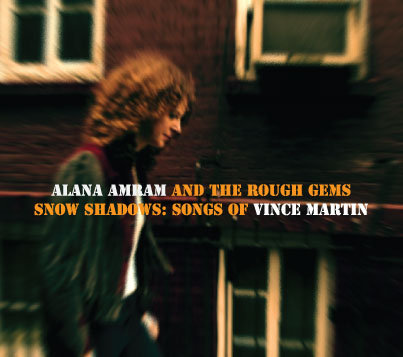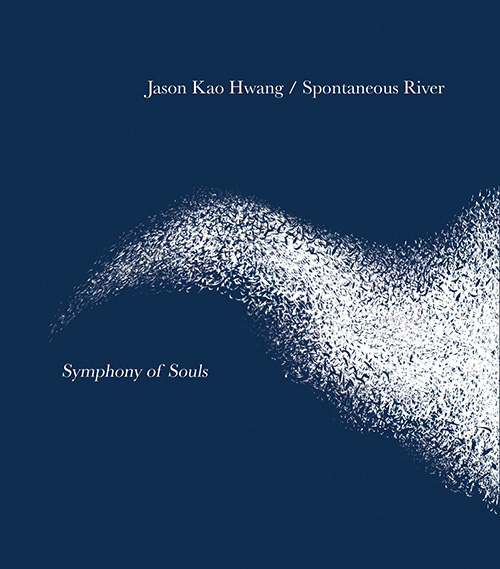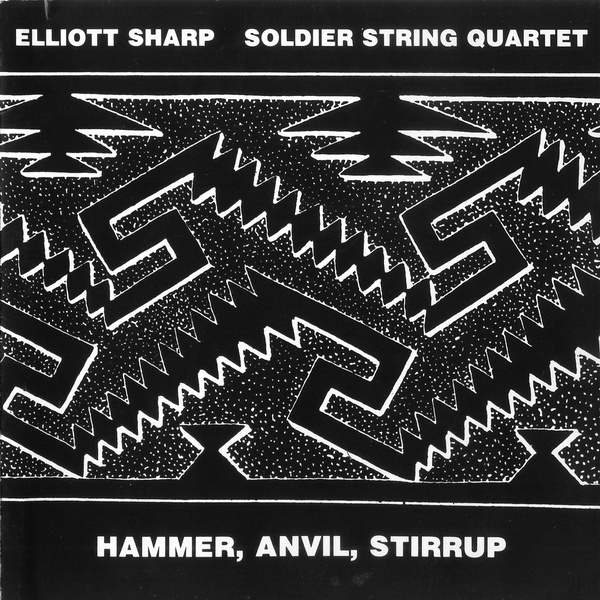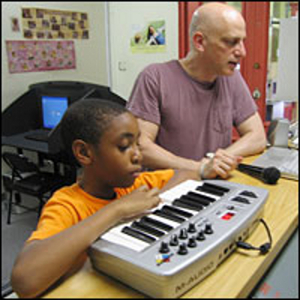
Photo Jennifer Pliego 2012
Dave Soldier leads a double life as a musician and a neuroscientist. As composer, he cofounded (with conservationist Richard Lair) the Thai Elephant Orchestra, 14 elephants for whom he built giant instruments and who released 3 CDs, and projects with children, including rural Guatemala (Yol Ku: Mayan Mountain Music) and New York's East Harlem (Da HipHop Raskalz). His Soldier String Quartet helped usher the use of hiphop, R&B, and punk rock into classical music in the 1980s, and his long-running Memphis/New York Delta punk band, the Kropotkins, is a cult favorite.

His composed The People's Choice Music: the most wanted and unwanted songs, following poll results of likes and dislikes of the American population, with artists Komar & Melamid; song cycle/oratorios in collaborations with Kurt Vonnegut, and many chamber and classical works. As a performer and arranger, he worked with John Cale, Bo Diddley, Van Dyke Parks, David Byrne, and many jazz and avant garde acts, appearing on over 100 albums and films on violin, guitar, or arranger. The Violinist, is a current film/theater work.

Soldier String Quartet, circa 1989: Mary Wooten, Ron Lawrence, Laura Seaton, Dave Soldier, photo Tom Caravaglia
As David Sulzer, he is a neuroscientist and Professor at Columbia University in the Departments of Psychiatry and Neurology. Sulzer's lab investigates the synapses of the cortex and basal ganglia including the dopamine system, in habit formation, planning, and decision making.

with Jonathan Kane. Photo Marylene Mey
His lab and collaborators have made major contributions to understanding the action of addictive drugs and causes of diseases including Parkinson's, Huntington's and autism. They developed the first methods to directly measure the fundamental unit of neurotransmission (quantal neurotransmitter release) and the first optical method to visualize neurotransmission at the synaptic level in the brain (by developing fluorescent false neurotransmitters).

A few projects unite these personalities. With computer musician Brad Garton, he initiated the Brainwave Music Project, which allows musicians to perform using their brain's electrical activity and teaches audiences about the nervous system. With chemist Roald Hoffmann, he runs a monthly science meets art series, Entertaining Science, at the Cornelia Street Cafe. And he has a series of new pieces that use mathematic transformations including fractals and calculus to create new repertoire, such as a 20 minute version of Chopin's Minute Waltz.
Organist Walter Hilse premieres "The Crayfish", the first movement from Dave Soldier's book, "Organum" for solo organ, with pieces based on nature and patterns in nature. At St. Peter's Lutheran Church (also known as the "jazz"church") in New York City, June 11, 2011
What do you remember about your first guitar?
I bought a used Stratocaster in high school for $100, as I was Jimi Hendrix fan. When I was 20 touring with a country band, High Noon, I traded it for a Telecaster and put a Bigsby bar on it. as I needed a more rockabilly sound. I still have the same Telecaster, and I play it occasionally with the Kropotkins, and when the bass player from the Plastic People of the Universe, Ivan Bierhanzl, puts together his New York band versions. I’ve seen people complain about it on the web as I didn’t keep the pure, Tele fans can be crazy.
I don’t have a very good flamenco guitar yet, but the one I have by Antonio Bernal is Seville is very good for the price, he is a very talented maker. His uncle Valeriano’s shop is across from the soccer stadium, and I am sure he can also make a very high level instrument.
I’ve also never owned a very good violin, but the one I use the most now is by an American maker, James Reynolds Carlisle, about 100 years old, and can sound pretty good: a lot of my old recordings were really on a bad instrument, but what can I say, it forced me to play in a different way and develop a style. For live jazz shows I’m now using a 5 string, which has a viola C added, made by David Gage’s shop with Ned Steinberg they call “The Realist”. It is klunky as an acoustic instrument but has a good sound for an amplified violin and less feedback on stage. Stuff Smith might have had the best amplified violin sound, and it was just a Barcus Berry contact pickup held with a rubber band: it’s because he was such a great musician and figured out how to play it. Amplified violin is truly even more of a headache than the guitar, so I’m glad David and Ned are working on this.
Composed by Dave Soldier, performed by Rebecca Cherry, violin, images assembled "Shadows Chooser Their Horrors" by Jenn Reeves
Which was the first and the last record you bought with your own money?
When I was growing up in Carbondale, Illinois in the 1970s you could still find 78 records in junk shops that you could buy for 25 cents. My favorite, which I bought when I was 13, was Howlin’ Wolf’s “Moaning at Midnight” on one side and “How Many More Years” on the other side. I played it hundreds of times, and those two songs are completely imprinted on me from the time I was 13 years old. I still have it but in two pieces, as I dropped it on the floor. If you can put these on your website, please do, I wasn’t too impressed when I heard punk rock as Wolf’s music was so much bigger and meaner and more real. “Moaning at Midnight” is only harmonica, guitar and drums, and the other the same but with a piano. To me things never got better.
Other 78s that had a big effect on me were Grady Martin and his WIngin’ Strings, Red Foley “My Window Faces the South”, with side B “Pork Chop Stomp" which introduced me to the country jazz tradition. He was a great guitarist, and Red Foley was his singer, with a tremendous band. Since this site is about guitar, try to post it. Muddy Water’s “I’m Ready” with an amazing Little Walter solo, Jerry Lee Lewis “Whole Lotta Shaking”. Jimmy Rogers’ 78 with “My Last Meal” and “Good Rockin Tonight” was the most amazing guitar I had ever heard to that point, along with Hendrix of course: Jimmy Rogers was Muddy’s guitarist, but played in a different T-Bone Walker and Lonnie Johnson style on that record. Also Lightnin’ Slim and Lazy Lester on “Rock Me Momma". Lester is still performing now, and I can tell you from sitting in with him when I was a kid, he is a real gentleman. Hope you can post these.
I also bought a lot of 89s of Jimmy Lunceford including a double 78 of “Blues in the Night”, Roy Eldridge, Billy Eckstein, Count Basie, Cab Calloway, Ella Fitzgerald.
For LPs, the one that affected me most was Bill Monroe’s “Bluegrass Instrumentals”, which my cousin Bob Blacksberg in Chicago bought me. Bob’s son and my nephew, Dan Blacksberg, is now a great klezmer and avant garde jazz trombonist. He was 6 years older and I would visit him in college when they had music festivals, so I got to hear a lot of the classics live. For example, I actually heard the Mississippi Sheiks live! I think they are the ancestral rock and roll group, one of them was Charlie Patton’s brother, Sam Chatmon, with Carl Martin on violin. I got to sit in with JE Mainer, who was an early inventor of bluegrass before Monroe and Scruggs, and Lazy Lester with Lightnin’ Slim.
I was playing guitar, piano, and banjo when I bought John Harford’s “Steampowered Aeroplane” which had Vassar Clements playing the most amazing improvisation I had ever heard on the violin. So I dug out a viola I had played in school orchestra when I was 8 years old and at 15 started to teach myself the violin. Vassar was absolutely my inspiration, and I wish he was more appreciated for his incredible musicianship. My mother bought me Stephane Grappelli’s “Afternoon in Paris” and I bought the Everest LP of Stephane and Stuff Smith playing together, and Stuff Smith and Grappelli are still my models now. Merle Haggard released his Bob Will’s tribute LP, “To the greatest damn fiddle player in the world”, which was so wonderful, I hope you can put a cut or two from that as well.
"Miser, Miser" (2012) by David Soldier, world premiere, Shapeshifter Lab, Brooklyn, NY 12/04/12
So my listening taste was so out of step with everyone around me. My heroes were the blues musicians in Chicago like Muddy and the Wolf, the country players in Nashville, Bakersfield and Texas. My list of favorites when I was 13 were Bill Monroe, Muddy Waters and Miles Davis. A couple of years later I added James Brown, Eddie Palmieri, Joni Mitchell, Stevie Wonder and Steely Dan: the latter three were the only tastes I really shared with my contemporaries. These were all recordings I listened to hundreds and hundreds of times. Eddie Palmieri made me want to be a composer, like Vassar made me want to play the violin.
Probably the last recording I’ve bought is Nathan Milstein, who is such a beautiful violinist, almost too perfect to listen to, sort of like Paco de Lucia or Bach. A very few people are so profound that they are almost painful. The thoughtful nature of his sound is so beautifully designed, honest, incredibly well done, and passionate.
What are the challenges and benefits of today's digital music scene?
First, I very much like the approach that Marc Ribot and some of his colleagues are putting together to have a way for musicians and others to be paid by those aggregating our efforts which they call the “Content Creator Coalition”.
I’ve moved to New York in the 1980s, when there were dragons and hobbits in Brooklyn. The obvious change is that there used to be thousands of players making a living. However in the avant garde, almost no one made money, and that hasn’t changed. The big shock to me, moving here from Gainesville Florida where I was playing all the time with different style groups - the university orchestra, Bo Diddley’s group, the Gainesville Jazz All Stars, country bands at auctions - was how racially segregated the music scenes could be here, and then how so many of the musicians came from rich families. We only had one rich family in my home town! Except that the performance venues used to be more aggregated in a small area of the city, like the East Village or Soho, I’m not sure the more experimental scene has changed much. The earlier neighborhoods had a higher population density, so hundreds of people could show for say the Ordinaires in the East Village, and
fewer people live close to say The Firehouse or Shapeshifter, which are nicer places than any of the earlier spotsl with the exception of Tonic which was an outstanding room.
Still there were a lot of concerts I would attend even then where I might be the ONLY person to show up. In the 80’s I went to two John Zorn concerts where I was the only person in the audience who showed up. I had a concert at the Pyramid with the Soldier String Quartet and six people showed up, I thanked each one by name on stage. I went to hear one of my favorite jazz pianists, Junior Mance at Bradley’s, and I was the only one listening, everyone else was eating dinner. Now when I go to Phill Niblock’s loft concerts there may be 5 people in the audience. For that matter, when I would hear Muddy Waters, Bill Monroe and Miles Davis, sometimes there were perhaps 40 or 50 people in the audience. So while the ability to make a living has disappeared almost entirely, and no one can be happy at that except for those who own the business on the internet, in some ways things are the same. I’ve learned that the important thing is to make the art and have even a small but passionate audience you communicate with: sometimes the ramifications can be profound.
The first CD on my Mulatta Record label was The Tangerine Awkestra, a group of little kids in Brooklyn improvising after taking a class in jazz from the flutist Katie Down. In an article about the project , I joked
So this is one of several times that I wrote what I thought was a satire that turned out to be true.“Economic theory states that less expensive modes of production will eventually overtake more expensive, labor-intensive methods. Most multiple-part orchestral works require 2 days or more to record, and weeks of splices and edits before they can be released. The entire CD by The Tangerine Awkestra, which lasts for nearly an hour, was recorded in 2 hours and contains no edits, overdubs or splicing. The total studio costs were $200 U.S. The cost of one genuine orchestral symphony by a real orchestra would go to produce 500 newCDs by the Tangerines. The current budget for a Metropolitan Opera productionis $4 million: the idea that 20,000 new CDs by the Tangerines could be recorded with that budget shows the historical inevitability of takeover by naughtimusik. Clearly, a flood of recordings released by The Tangerine Awkestra would eradicate the entire orchestral repertoire.”
What's your best musical experience?
In a way, my favorite concert I can think of was performing with Pete Seeger, the Argentine singer Bernardo Palomobo, and Dorothy Potter for the surviving members of the Abraham Lincoln Brigade in 1996. The audience was all of the old men who had gone to your country sixty years before to fight Franco. They were the handsomest old men I’d ever seen. I had to fake all the Spanish Civil War songs, it didn’t matter, all the men knew them.
There were a few concerts with the Soldier String Quartet where the group was so well rehearsed that we played 30 minute pieces by memory, and could really concentrate on the nuances and communicating with the audience. We’d have the occasional concert with John Cale where everything would fit together and everyone in the room would feel transported. Once in a while the Kropotkins could do something at that level too.
Maybe the best live concert I ever saw was one with Puntillia Rios the Santeria singer with Paquito D’Rivera and some other great players outdoors, just creative and everyone listening so well. I saw one great Muddy Waters concert in Gainesville when he told the band to sit down and had his family sit behind him like deacons in a church, and played solo. I saw a Miles David concert in Willimantic Connecticut where he started 4 hours late and then played for 3 hours the strangest music I had ever heard, like Sly Stone meets Stockhausen, many of the players that were later on Get Up With It.
Right now, I ‘m having a great time with my duo with Jonathan Kane, we practice a lot and work at the material, sometimes it all comes together.
What’s your craziest project about?
Possibly the cockroach New York Times project with Jaron Lanier and Lisa Haney we called the Y2 bug. It came in second for a New York Times time capsule competition. It was great that it didn’t win first or we’d have to build it. Another case of satire that become true, we would have coded writing in DNA, and very soon after it became a scientific movement, apparently suggested by our joke. So from that, The Tangerine Awkestra, the People’s Choice Music, I feel that there is no satire crazy enough that it won’t occur eventually.
Now Brad Garton and I are working on biology and music projects, one is the Brainwave Music Project where we use EEGs to control music, another uses molecular biology. I’ve resurrected a project to have songbirds write music with Doug Repetto, Ofer Tchernichovski and Jessic Liu, we’ll see how it goes.
What is some valuable advice that someone has given to you in the past?
Bo Diddley showed me how to curl the guitar strings that run out of the tuners, you just run a house key over them!
Where are your roots? What are your secret influences?
I’m a fan of naturalists like John Audubon, and was a fan of the Euell Gibbons books on wild food, each one a chapter on a plant. I was a fan of the founder of the green revolution, Norman Borlaug, and several biologists, one of the best known being the neuroscientist Bernard Katz. One of my heroes is Richard Lair, the elephant conservationist in Thailand, who was also my partner in the Thai Elephant Orchestra. His live is devoted to the continuation of that species, I can’t think of anything more valuable to do, so long as you can be effective, which he has been time and again. I’m lucky enough to make a living studying nature, I only wish I could do more and better, particularly to stop us from destroying the diversity of life.
I go through periods where I become immersed in an idea. For a few years, I’ve been trying to understand economics, two writers I recommend are Randy Wray and Yves Smith. For a while I was absorbed by old New York City, the writers there are Luc Sante and Herbert Asbury. I went through an abolitionist period and wrote an oratorio, “The Apotheosis of John Brown”. I went through a period reading constantly about the Arabic period in Andalusia, and wrote a lot of the poetry into music. I named my groups the Kropotkins and the Spinozas after writers who had an effect on me.
I have a favorite unknown science fiction writer, R. A. Lafferty. I believe he hardly every left Oklahoma, and he recreates the Midwest everywhere in deep space. I wrote him a fan letter many years ago, and still appreciate him.
I loved Kurt Vonnegut when I was 15, and 20 years later I got to write to operas / music theater pieces with him. I was a fan of Komar & Melamid the Russian painters, and then got to write an opera with them, the People’s Choice Music, and the Thai Elephant Orchestra is an offshoot of their Elephant art project.
Which living or dead artist would you like to collaborate with?
I wish I could have collaborated with Maurice Ravel and Conlon Nancarrow, as I feel so much resonance with their work. I also love Harry Partch, but I don’t think I would have been able to work with him.
I like all the satirists, I have a long piece of Jonathan Swift poetry but I can’t find a good Irish singer – maybe someone can help! It would have been interesting to work with Richard Pryor, Mark Twain, Lenny Bruce. Vonnegut was good to hang out with, but very hands off.
There are so many artists now I would love to work with in opera or musical theater, two that jump to mind are Tony Kushner and Terry Gilliam. It’s too challenging for me on a business level, I don’t know how to approach either the opera or theater world at all. I’ve never even met a major orchestra conductor, and all my efforts to get into the classical or opera world have been useless: although I’ve had these great co-conspirators like the Manhattan Chamber Orchestra and now the Composer’s Concordance Orchestra, who run creative projects with almost no money. The classical music world seems like an impenetrable fortress, and theater and film even more so. God, if it is bad for me, it must be even more depressing for people with fewer resources.
Society just seems more and more like a tiny number of ambitious and greedy men who use the rest of us as tools to supply their wealth. I think anyone who still does anything on their own, like has their own store or helps people to build their own houses and can make their own plans without being stamped is kind of a hero. I feel funny saying to someone in Spain that the rest of us are being made into slaves, as it is even more obvious to you. Maybe doing this weird art that is apart from the world of finance is more important than we are yet aware.
What projects are you working on now and what does the future hold?
I have always liked the idea of being at the same time as far back in time and far in the future as possible. I think this is why I have never really been a card carrying member of the avant grade: to be in the front lines, you need to be think that there is a marching direction. For me, the oldest music, say Machaut or a Lomax recording on a Greek island of someone singing Homer, sounds as modern as anything made now in New York or Paris.
So I work on several projects at a time, and sometimes they take a very short time and sometimes years and years.
with Jonathan Kane. Photo Bridget Barrett
We spent a long time listening to Henry Flynt, who figured out a marvelous style made of hillbilly music and minimalism. Then R&B jazz like Lou Donaldson, George Duke, Roy Ayers, Ramsey Louis. As I’m back to playing violin, I found that I could base a style in part on Stuff Smith and Stephane Grappelli, who I’ve loved since a teenager, and a under-recorded bebop violinist named Ray Perry, as well as Cannonball and Coleman Hawkins and rock guitar transferred to violin. So we have a lot of musical interest in the compositions, and also groove, so we’ve so far succeeded with audiences from every age and musical taste. This isn’t easy with instrumental music, so I’m very happy with the project for a variety of reasons.
On the towards the future side, I’m collaborating with Brad Garton, who runs the Columbia Computer Music Studio, on two projects. One is the Brainwave Music Project, where we have people write music using EEGs. This is a lot of fun, and I give a lecture on brain activity and Brad on how it is mapped to music. It has been a bit stymied lately for technological reasons, like bad portable EEGs, and I’m hoping over the next year we might make more “headway” with it. The other is a means to map the processes of evolution and sexual selection using molecular biology to music, which I call “Sex Music for Carbon Based Lifeforms”. Not ready yet, but potentially very powerful.

Then Brad’s colleague, Doug Repetto, the bird scientist Ofer Tchernowkowski, and an undergrad named Jessica Liu and I are resurrecting the song bird conposition project with his zebra finches. If we get it to work, I think it will be very interesting to see what birds in the wild would compose if they have an ergonomic approach to do so.
For my earlier work, I will soon release a 2 CD set of my classical piano works played by Steve Beck and a 3 CD set of my string quartet music played by the PubliQuartet reissues of the Soldier String Quartet. I’m also recording my Komar & Melamid socialist realist opera, Naked Revolution: we recorded the orchestra alone in 1997, but I hope to finally add the vocal, now with all Russian singers.
I just got copies of the new Kropotkins CD, Portents of Love which is quite lovely. It has been wonderful playing with these great musicians occasionally for 20 years, and there is some great playing and writing on this one.
I worked a little on very early hip-hop music, due to a great record producer friend, Giorgio Gomelski. I’ve started doing a project now again with Afrika Bambaataa and the Zulu Nation, so with luck we’ll make some unexpected art.
Thomas Carlo Bo conducts the premiere of Dave Soldier's Concerto Grosso, "Bambaataa Variations" with the PubliQuartet (Curtis Stewart, Jannina Norpoth, Nick Revel, Amanda Gookin) and the Composer's Concordance Orchestra in New York City, December 7, 2013.
My CD label, Mulatta, has some great records coming out that I’m producing, including Jason Kao Hwang’s improvising orchestra, Pedro Cortes’s flamenco compositions, the jazz French horn player John Clark, the violinist Charlie Burnham, and Syvlain Leroux’s coaching of kids to compose with the Fula flute in Guinea. Then Bob Neuwirth, a great songwriter I toured with in the nineties, and I are co-producing a fantastic record by a Texas singer, Vince Bell.
Finally, I’m working with the great flamenco guitarist Pedro Cortes, and we are trying to figure out how to express authentic flamenco music with classical musicians. We have one piece on YouTube where a string orchestra plays a Seguiriya with the flamenco singer Ismael Fernandez. It’s a new approach, and very promising, we’d like to do a whole night in this style.
SELECTED Discography
As leader / co-leader
Organum (2012, Mulatta)
The Crayfish
Olivia Porphyria (fractal on the name of Haydn)
A Year for a Pomegranate (after Ramon Montoya)
Hocket II
The Crayfish
Olivia Porphyria (fractal on the name of Haydn)
A Year for a Pomegranate (after Ramon Montoya)
Hocket II
The Complete Victrola Sessions / The Violinist (2011, Mulatta)
Alegria en la cueva vieja
Belvedere
Brian's Lament (aka Surf's Up)
A Boy Has Never Wept Nor Dashed A Thousand Kim
Prelude
The Unfolding Opium Poppy
Li Yuen
Togetherness Blues
Mata Hari, Balerina de Java
Duo for Violin & Meade Lux Lewis
Belvedere
Brian's Lament (aka Surf's Up)
A Boy Has Never Wept Nor Dashed A Thousand Kim
Prelude
The Unfolding Opium Poppy
Li Yuen
Togetherness Blues
Mata Hari, Balerina de Java
Duo for Violin & Meade Lux Lewis
The Kropotkins Paradise Square (2010, Mulatta)
Biloxi
My Body Lies on the Mountain
Beulah Land (Charlie Burnham)
They Are There (Charles Ives)
Biloxi
My Body Lies on the Mountain
Beulah Land (Charlie Burnham)
They Are There (Charles Ives)
Yol Ku', Inside the Sun: Mayan Mountain Music (2008, Mulatta)
Dave Soldier & Alan Kushan coaching compositions
by Mayan schoolchildren in San Mateo Ixtatan, Guatemala
Oracion de la Cruz
El Bello Quetzal
Casamiento de los Apaches
Xan Matin Mix
Noble Cazador
Fiesta de los Mayas
Chamber Music (2007, Mulatta)
East St. Louis 1968 fpr viola
Duo Sonata for violin & cello
Little Andre for bass flute
To Spike Jones in Heaven for accordion
Utah Dances for saxophone
Sontag in Sarajevo
1. Fluor, Phosphor, Lumen & Candle
2. Dance for the Tetragrammaton
Clever Hans
ballet for violin, cello, harpsichord
Hockets & Inventions for organ
The Unfolding Opium Poppy
for violin & piano
Da Hiphop Raskalz (2006, Mulatta)
Music composed by 5-10 year old children
in East Harlem or Watertown Massacusetts,
coached by Dave Soldier
T Rex Chelea & The Mighty Lions
I Want Candy Muffletoes
Ghosty Isabella (my niece!)
Do the Lollipop Sweetness
1,2,3,Go 911 Rock N Roll Coyotes
What's My Name? Boys & Girls Club Of The Night
Chickenwing Looneytunes
I Don't Want You No More Tuff Kids
Feel Tha Beat The School Rock Band
Schooldogs Rule The Halls Muffletoes
Xtreme Team Funkydelic Mix Woke Up Los Nonameos
Jumpin' Abc Group
Happy Go Lucky Day Michelle (another niece!)
Barney Mac Hiphop Skyhigh
Listen to the Children on the Radio Franchize Children
Soldier Stories (2005, Mulatta) with Kurt Vonnegut
The Soldier's Story
30 min radio opera
featuring Phil Schaap as the radio MC
lyrics and narration by Kurt Vonnegut
The Apotheosis of John Brown
a 30 min oratorio with text adapted from Frederick Douglass

Elephonic Rhapsodies (2004, Mulatta)
A Child's Guide to the Elephant Orchestra
Phong's Solo
improvisation by a 5 year-old elephant
The Ganesha Symphony Symphony #1 in four movements
1 The Birth of Ganesha
2 Shiva Beheads Ganesha
3 A Head is Found
4 Ganesha Trimuphant
Rhapsody in Grey
An Elephant's Swan Song
Three Baht Opera
Little Elephant Saddle (Trad.)
Elephants with Dave on violin
Floating Down the Pin River (Trad.)
Elephants with a local mahout hillbilly band
Pin Pia (Smithitham)
Elephants with a traditional Thai instrument
Bamboolin (Muangling)
Elephants with a bamboo violin
An Adult's Guide to the Elephant Orchestra
Kaw-Liga (Williams/Rose)
Yes, they play Hank Williams with Thai hillbilly players
Pastorale Lite (Beethoven, Arr. Soldier)
Elephant orchestra with marching band
Homage to Harry Partch
Mr. Elephant (Trad., Arr. Soldier)
with Japanese saxophonist
Chang! Chang! Chang! (Trad., Arr. Soldier)
Thai nursery rhyme, kids and elephants
Beethoven’s Pastorale Symphony, First movement
(Beethoven, Arr. Soldier) Marching band and elephant orchestra
A Child's Guide to the Elephant Orchestra
Phong's Solo
improvisation by a 5 year-old elephant
The Ganesha Symphony Symphony #1 in four movements
1 The Birth of Ganesha
2 Shiva Beheads Ganesha
3 A Head is Found
4 Ganesha Trimuphant
Rhapsody in Grey
An Elephant's Swan Song
Three Baht Opera
Little Elephant Saddle (Trad.)
Elephants with Dave on violin
Floating Down the Pin River (Trad.)
Elephants with a local mahout hillbilly band
Pin Pia (Smithitham)
Elephants with a traditional Thai instrument
Bamboolin (Muangling)
Elephants with a bamboo violin
An Adult's Guide to the Elephant Orchestra
Kaw-Liga (Williams/Rose)
Yes, they play Hank Williams with Thai hillbilly players
Pastorale Lite (Beethoven, Arr. Soldier)
Elephant orchestra with marching band
Homage to Harry Partch
Mr. Elephant (Trad., Arr. Soldier)
with Japanese saxophonist
Chang! Chang! Chang! (Trad., Arr. Soldier)
Thai nursery rhyme, kids and elephants
Beethoven’s Pastorale Symphony, First movement
(Beethoven, Arr. Soldier) Marching band and elephant orchestra
Soldier String Quartet Inspect for Damaged Gods (2004, Mulatta)
Bo Diddley
Bo Diddley, arranged Soldier,
(Bo heard/approved this arrangement!)
Preachin' Blues
Robert Johnson, arranged Soldier
Ugly
Robert Pete Williams, arranged Dave Soldier
In Time
Sly Stone, arranged Dave Soldier
Michael Callen
Here Comes the King
Raymond Scott, arranged Soldier
Boogie on party people
N'Orleans
Marsh Fugue
unlisted outdoors cut on the CD
Regina Carter, Dave Soldier, violins, Judith Insell viola, Dawn Avery, cello, Tiye' Giraud & Jimmy Justice, vocals, Tiye, small percussion, Jonathan Kane & Richard Bona, drums & bass
Bo Diddley
Bo Diddley, arranged Soldier,
(Bo heard/approved this arrangement!)
Preachin' Blues
Robert Johnson, arranged Soldier
Ugly
Robert Pete Williams, arranged Dave Soldier
In Time
Sly Stone, arranged Dave Soldier
Michael Callen
Here Comes the King
Raymond Scott, arranged Soldier
Boogie on party people
N'Orleans
Marsh Fugue
unlisted outdoors cut on the CD
Regina Carter, Dave Soldier, violins, Judith Insell viola, Dawn Avery, cello, Tiye' Giraud & Jimmy Justice, vocals, Tiye, small percussion, Jonathan Kane & Richard Bona, drums & bass
Thai Elephant Orchestra (2001, Mulatta)
Thung Kwian Sunrise
Temple Music
Rainforest
Jojo
Duo for Renats
Big Band
Swing Swing Swing
Percussion Trio
Luuk Kob's Diddley Bow Feature
Harmonica Music
Heavy Logs
Now We're off to Paint
Elephant Field Recordings
Somneuk & Four Elephants
Trio for Theremin & Electric Keyboard
Ken's Wind Instrument
Ice-9 Ballads (2001, Mulatta, rerelease 2009) with Kurt Vonnegut
Annihilation Life
Dyot Meet Mat
Nice Very Nice
119th Calypso
Duo For Clarinet and Meade Lux Lewis
14th Calypso
Mona's Funeral Music
Big Tyrant
Folly
lyrics and narration by Kurt Vonnegut
The Kropotkins Five Points Crawl (2000, Mulatta)
Truckstop Girls
Seconds Past Midnight (with Lorette)
Sissy Wa Wa (with Lorette)
Crazy Hannah (Mo Tucker)
Junior's Groove (Lorette Velvette)
I Gotta Man (Charlie Burnham)
Starkweather (lyrics Jim Tucker)
Forever Motel (lyrics Jim Tucker)
Drivin' To Spring
Justice Down South
Lorette Velvette, Charlie Burnham, Dave Soldier, Dog, Jonathan Kane, Mo Tucker
Truckstop Girls
Seconds Past Midnight (with Lorette)
Sissy Wa Wa (with Lorette)
Crazy Hannah (Mo Tucker)
Junior's Groove (Lorette Velvette)
I Gotta Man (Charlie Burnham)
Starkweather (lyrics Jim Tucker)
Forever Motel (lyrics Jim Tucker)
Drivin' To Spring
Justice Down South
Lorette Velvette, Charlie Burnham, Dave Soldier, Dog, Jonathan Kane, Mo Tucker
The People's Choice: Music (reissued 2000, Mulatta) (1997, Dia)
The most wanted song
The most unwanted song
composed according to poll results
The most wanted song
The most unwanted song
composed according to poll results
the Tangerine Awkestra Aliens Took My Mom (2000, Mulatta)
Music composed by 2-9 year old children in Fort Greene Brooklyn,
coached by Dave Soldier & Katie Down
Aliens invade from Jupiter
Spaceships on the Empire State Building
Volcanoes explode at the center of the earth
The aliens blow up Antartica
Minuet for recorder & violin
Aliens took my Mom
The navy bombs them
Twelve bar blues
All of the humans blow up
The aliens get nuclear bugs in them and pop
The aliens blow up Part II
Everything is soft
Music composed by 2-9 year old children in Fort Greene Brooklyn,
coached by Dave Soldier & Katie Down
Aliens invade from Jupiter
Spaceships on the Empire State Building
Volcanoes explode at the center of the earth
The aliens blow up Antartica
Minuet for recorder & violin
Aliens took my Mom
The navy bombs them
Twelve bar blues
All of the humans blow up
The aliens get nuclear bugs in them and pop
The aliens blow up Part II
Everything is soft
Jazz Standards on Mars (1997, Enja) Soldier String Quartet with Robert Dick
arrangements by Soldier
India (J Coltrane)
Gazzeloni (E Dolphy)
Water Babies (W Shorter)
Machine Gun (J Hendrix)
Something sweet, something tender (E Dolphy)
Sometimes, perpetually (R Dick)
Three wishes (O Coleman)
Robert Dick, flute
Regina Carter, Dave Soldier, violins, Judith Insell viola, Dawn Avery, cello
Richard Bona, Mark Dresser, Kermit Driscoll, bass
Valerie Naranjo Percussion
Ben Perowsky, Steve Arguelles, Drums
arrangements by Soldier
India (J Coltrane)
Gazzeloni (E Dolphy)
Water Babies (W Shorter)
Machine Gun (J Hendrix)
Something sweet, something tender (E Dolphy)
Sometimes, perpetually (R Dick)
Three wishes (O Coleman)
Robert Dick, flute
Regina Carter, Dave Soldier, violins, Judith Insell viola, Dawn Avery, cello
Richard Bona, Mark Dresser, Kermit Driscoll, bass
Valerie Naranjo Percussion
Ben Perowsky, Steve Arguelles, Drums
The Kropotkins (1996, Koch)
Cold Wet Steel (Soldier)
Shake 'Em on Down Fred (McDowell)
Everdream (Soldier/Rory Young)
On This Earth (Soldier)
Parchman Farm (Bukka White)
Something Crawling Round My Bed (Velevette)
Good Cheap Transportation (Bennett)
Coal Black Wind (Soldier)
Some of the Dust (Bennett)
The Nasadiya (Soldier)
Crow Jane (Soldier, based on anonymous song)
Cold Wet Steel (Soldier)
Shake 'Em on Down Fred (McDowell)
Everdream (Soldier/Rory Young)
On This Earth (Soldier)
Parchman Farm (Bukka White)
Something Crawling Round My Bed (Velevette)
Good Cheap Transportation (Bennett)
Coal Black Wind (Soldier)
Some of the Dust (Bennett)
The Nasadiya (Soldier)
Crow Jane (Soldier, based on anonymous song)
Lorette Velvette, Mark Feldman,
Dave Soldier, Dog, Jonathan Kane, Samm Bennett
Soldier String Quartet She's Lightning When She Smiles (1996, NewTone)
Another Man Done Gone (Vera Hall)
Future Blues (Willie Brown)
Clouds in My Heart (Muddy Waters)
Black Snake Moan (Blind Lemon Jefferson)
Prelude (George Gershwin)
Moanin' at Midnight (Howlin' Wolf)
Uncloudy Day (Staples Singers)
Moon and Stars (Louise Johnson)
Sugar Momma (John Lee Hooker)
Somebody Help Poor Me (Robert Pete Williams)
Cypress Grove (Skip James)
vocals: Tiye' Giraud, Jason White, Bobby Radcliffe, Napua Davoy
strings: Laura Seaton, Dave Soldier (violin), Ron Lawrence, Mary Wooten
Lenny Pickett, sax & clarinet
Myra Melford, piano
Brad Jones, bass
Leroy Clouden, drums
Another Man Done Gone (Vera Hall)
Future Blues (Willie Brown)
Clouds in My Heart (Muddy Waters)
Black Snake Moan (Blind Lemon Jefferson)
Prelude (George Gershwin)
Moanin' at Midnight (Howlin' Wolf)
Uncloudy Day (Staples Singers)
Moon and Stars (Louise Johnson)
Sugar Momma (John Lee Hooker)
Somebody Help Poor Me (Robert Pete Williams)
Cypress Grove (Skip James)
vocals: Tiye' Giraud, Jason White, Bobby Radcliffe, Napua Davoy
strings: Laura Seaton, Dave Soldier (violin), Ron Lawrence, Mary Wooten
Lenny Pickett, sax & clarinet
Myra Melford, piano
Brad Jones, bass
Leroy Clouden, drums
Smut (1994, Avant)
Dum Caupona Verterem
Ad Puerum Anglicum
Odalisque in the Seraglio
Miser, Miser
Graffiti from a 9th century manuscript
Quodlibet
Parisius Paridi
Letter to Ausonius
Tiye Giraud, Napua Davoy, Wilbur Pauley,
Ben Neill, Bob Bannister, Richard Auldon Clark, Jim Pugliese, Ron Bethea
Matarile
with 30 school children from Washinton Heights, New York City
War Prayer (1994, Newport Classic)
Mark Feldman, violin
Erik Friedlander, cello
with the Manhattan Chamber Orchestra
The Apotheosis of John Brown
a 30 min oratorio with text adapted from Frederick Douglass
Soldier String Quartet Sojourner Truth
(1991, Newport Classic)
Ultraviolet Railroad
1. Betonia where I fell into a trance
2. Rapture
3. I'm going upstairs, I'm going to take off all my clothes
1. Betonia where I fell into a trance
2. Rapture
3. I'm going upstairs, I'm going to take off all my clothes
Mark Feldman, violin
Erik Friedlander, cello
with the Manhattan Chamber Orchestra
The Apotheosis of John Brown
(1993, Newport Classic)
The Apotheosis of John Brown
a 30 min oratorio with text adapted from Frederick Douglass
Soldier String Quartet Sojourner Truth
(1991, Newport Classic)
Paris 1919 (John Cale, arr. Soldier)
Lonesome Train
Sojourner Truth
Ezekiel Saw the Wheel
String Quartet #1, The Impossible
1. Open Hydrant
2. Walking on the 3rd Rail
3. Ron Visits the Polymer Lounge
4. For His Bad Self
5. She Put My Head Under the Water
Laura Seaton, Dave Soldier, Ron Lawrence,
Michael Suchorsky (drums), Amina Claudine Myers
and Shelley Hirsch, vocals
Romances From the Second Line
(1990, Newport Classic)
Lonesome Train
Sojourner Truth
Ezekiel Saw the Wheel
String Quartet #1, The Impossible
1. Open Hydrant
2. Walking on the 3rd Rail
3. Ron Visits the Polymer Lounge
4. For His Bad Self
5. She Put My Head Under the Water
Laura Seaton, Dave Soldier, Ron Lawrence,
Michael Suchorsky (drums), Amina Claudine Myers
and Shelley Hirsch, vocals
Romances From the Second Line
(1990, Newport Classic)
Easy Street
Letter to Skip James
Die Heiterkeiten
Le Belvedere
Tillie's Punctured Romance
Christopher O'Riley, piano
Hockets & Inventions Letter to Skip James
Die Heiterkeiten
Le Belvedere
Tillie's Punctured Romance
Christopher O'Riley, piano
Walter Hilse, organ

Soldier String Quartet Sequence Girls
(1988, Rift Records)
Sequence Girls
Five Little Monsters
Rondo Amos Tutuola
If I had it to give (I'd give it to him)
Prelude
20-20 Blues (Skip James)
Moon Goin' Down (Charlie Patton)
Country Blues #2 (Muddy Waters)
Five Little Monsters
Rondo Amos Tutuola
If I had it to give (I'd give it to him)
Prelude
20-20 Blues (Skip James)
Moon Goin' Down (Charlie Patton)
Country Blues #2 (Muddy Waters)
Laura Seaton, Dave Soldier, violins; Ron Lawrence, viola;
Mary Wooten, cello; Ratso Harris, bass; Michael Suchorsky, drums
Mary Wooten, cello; Ratso Harris, bass; Michael Suchorsky, drums
Arranger, performer, composer, conductor (selected)
Alana Amram Snow Shadows: The songs of Vince Martin (2011, Kingswood) conductor for Van Dyke Park's arrangements
Samm Bennett The Big Off (1993, Knitting Factory) violin
Jason Kao Hwang Symphony of Souls (2011, Mulatta), violin, producer
John Cale and Strings (1992, Risc Disc) arranger, violin with Soldier String Quartet
John Cale Paris S'Eveille (1993, Crepuscule) orchestral arrangements, conductor, violin

John Cale and Bob Neuwirth, Last Day on Earth (1994, MCA) arranger, violin with Soldier String Quartet
John Cale Antartida (1995, Disques du Crepuscule) conductor, orchestral arrangements, violin
John Cale Walking on Locusts (1996, Rykodisc) arranger, violin with Soldier String Quartet

John Cale Eat and Kiss (1997, Rykodisc) arranger, violin with Soldier String Quartet
John Cale Dance Music (1998, Detour/ Warner Bros.) orchestral arranger
Nicolas Collins A Dark & Stormy Night (1992, Trace Elements ) violin with Soldier String Quartet
Sussann Deyhim Madman of God (1999, Crammed Disc) violin remixed by Bill Laswell as Shy Angels (2008)
Robert Dick Third Stone from the Sun (1993, New World) arranger, violin with Soldier String Quartet
Grupo Wara Malombo (1990 South American release) arranger, violin with Soldier String Quartet
Guided by Voices Do the Collapse (1999, TVT) arranger, violin with Soldier String Quartet
Guided by Voices Hold on Hope (2000, EP, TVT) arranger, violin with Soldier String Quartet
Guided by Voices Isolation Drills (2001, TVT) arranger, violin with Soldier String Quartet
Jason Kao Hwang Symphony of Souls (2011, Mulatta), violin, executive producer
Jessie Harris While the Music Lasts, (2004, Virgin) arrangements by Van Dyke Parks, with Soldier String Quartet
Jonas Hellborg & Tony Williams The Word (1992, Island/Axiom) violin with Soldier String Quartet
William Hooker Trio Yearn for Certainty (2010, Engine) violin, banjo, flamenco guitar (with Sabir Mateen)
William Hooker Trio Heart of the Sun (2013, Engine) violin, banjo, flamenco guitar (with Roy Campbell)
Le Nouvelles Polyponies Corses (Corsican Polyphony) Le Praiduisu (1999, Mercury) violin, arranger
Leroy Jenkins Themes & Variations on the Blues (1994, CRI) violin with Soldier String Quartet
Mandeng Eletrik (2004, Mulatta) violin
Richard Meyer (1994, Shanachie) Letter from the Open Sky violin
Jenny Muldaur Angry Elves (2002) piano
Bob Neuwirth and John Cale, Last Day on Earth (1994, MCA) arranger, violin with Soldier String Quartet
Phill Niblock / Soldier String Quartet Early Winter (1994, XI Records) violin with Soldier String Quartet
The Ordinaires The Ordinaires (1987, Dossier) violin
Christina Rosenvinge Foreign Land (2002, Lcd) arranger, violin with Soldier String Quartet
Sequitur To Have and to Hold (2007, Koch) composer
Elliott Sharp / Soldier String Quartet Tessalation Row (1987, SST) violin with Soldier String Quartet
Elliott Sharp & Carbon Larynx (1987, SST) violin
Elliott Sharp / Soldier String Quartet Hammer, Anvil, Stirrup (1989, SST ) violin with Soldier String Quartet
Elliott Sharp / Soldier String Quartet Twistmap (1991, EarRational) violin with Soldier String Quartet
Elliott Sharp & Carbon Abstract Repressionism, violin(1992, Victo) violin
Elliott Sharp / Soldier String Quartet Cryptoid Fragments (1993, Extreme Records) violin with Soldier String Quartet
Elliott Sharp / Soldier String Quartet Xeno-Codex (1996, Tzadik) violin with Soldier String Quartet
Elliott Sharp / Soldier String Quartet Rheo/Umbra (1998, Zoar) violin with Soldier String Quartet
Elliott Sharp & Carbon Syndakit, violin(1999, Zoar) violin
Elliott Sharp / Soldier String Quartet String Quartets 1986-1996 (2003, Tzadik) violin with Soldier String Quartet
Tango Project White Rabbit (1992, Newport Classic) composition (One Night)
Lorette Velvette Lost Part of Me (1998, Veracity) banjo, violin
as producer
Jason Kao Hwang and Spontaneous River Symphony of Souls (2012, Mulatta)
Pedro Cortes Los Viejos No Mueren (2013, Mulatta)
CD compilations
Dawn Avery (nee Buckholz), Dave Soldier, Regina Carter, Ron Lawrence. Photos by Ken Collins
Soldier String Quartet Real Estate (1990, EarRational)
Soldier String Quartet / Elliott Sharp No Wave (1990, SST)
Jonas Hellborg Illuminations violin with Soldier String Quartet (1991, Axiom)
Soldier String Quartet State of the Union (1992, Arrest)
Dave Soldier and others Century XXI (Vol II) Utah Dances (1994, New Tone).
John Cale I Shot Andy Warhol, arrangements (1997, TAG)
Kropotkins WFMU compilation (1998, WFMU)
Thai Elephant Orchestra / Dave Soldier/Richard Lair State of the Union (2001)
Thai Elephant Orchestra / Dave Soldier/Richard Lair Rough Guide Music of Thailand (2003)
film scores
Antartida (Orchestra arrangements for music by John Cale) arranger, orchestra conductor (1995)
Basquiat (Orchestra arrangements for music by John Cale, directed by Julian Schnabel) arranger, conductor (1998)
Her Name is Lisa (Musical arrangement, directed by Rachid Kerdourche) arranger, bandleader (1987)
I Shot Andy Warhol (Orchestra arrangements for music by John Cale,directed Mary Herron) arranger, orchestra conductor (1997)

In Bed with Ulysses (partial score composed by Dave Soldier, directed Alan Adelson & Kate Taverna)
Mekong Delta (Music composed by Dave Soldier, directed by Vanessa Ly) composer, arranger, conductor (2003), winner Hong Kong Film Festival
Serenade (partial score composed by Dave Soldier for animation by Nadia Roden, winner NY Film Festival (2003)
Special Friends (Music by Teo Macero for ABC-TV) bandleader, violin with Soldier String Quartet (1988)
Sesame Street (soundtrack for 6 cartoons for the TV show, score composed by Dave Soldier, directed by Nadia Roden) composer, arranger (1999).
The Violinist composer, directed by Winsome Brown (2011)
pop arrangements
David Byrne, string section for touring band
John Cale, numerous film scores and CDs as above, produced by Joe Boyd
Guided by Voices, two CDs and EPs produced by Ric Ocasek and Rob Schaft
Jonathan Richman, produced by Ric Ocasek
Christina Rosenvinge, produced by Lee Ranaldo
Sesame Street cartoons
Vixtrola, produced by Ric Ocasek
conducting for Van Dyke Park's arrangements, CDs by Jesse Harris and Alana Amram and live shows for Rufus Wainwright and Syd Straw


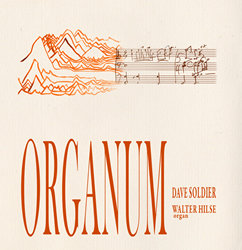




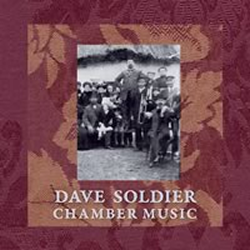
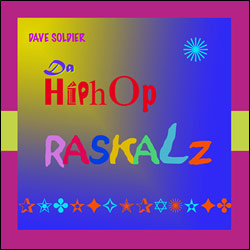


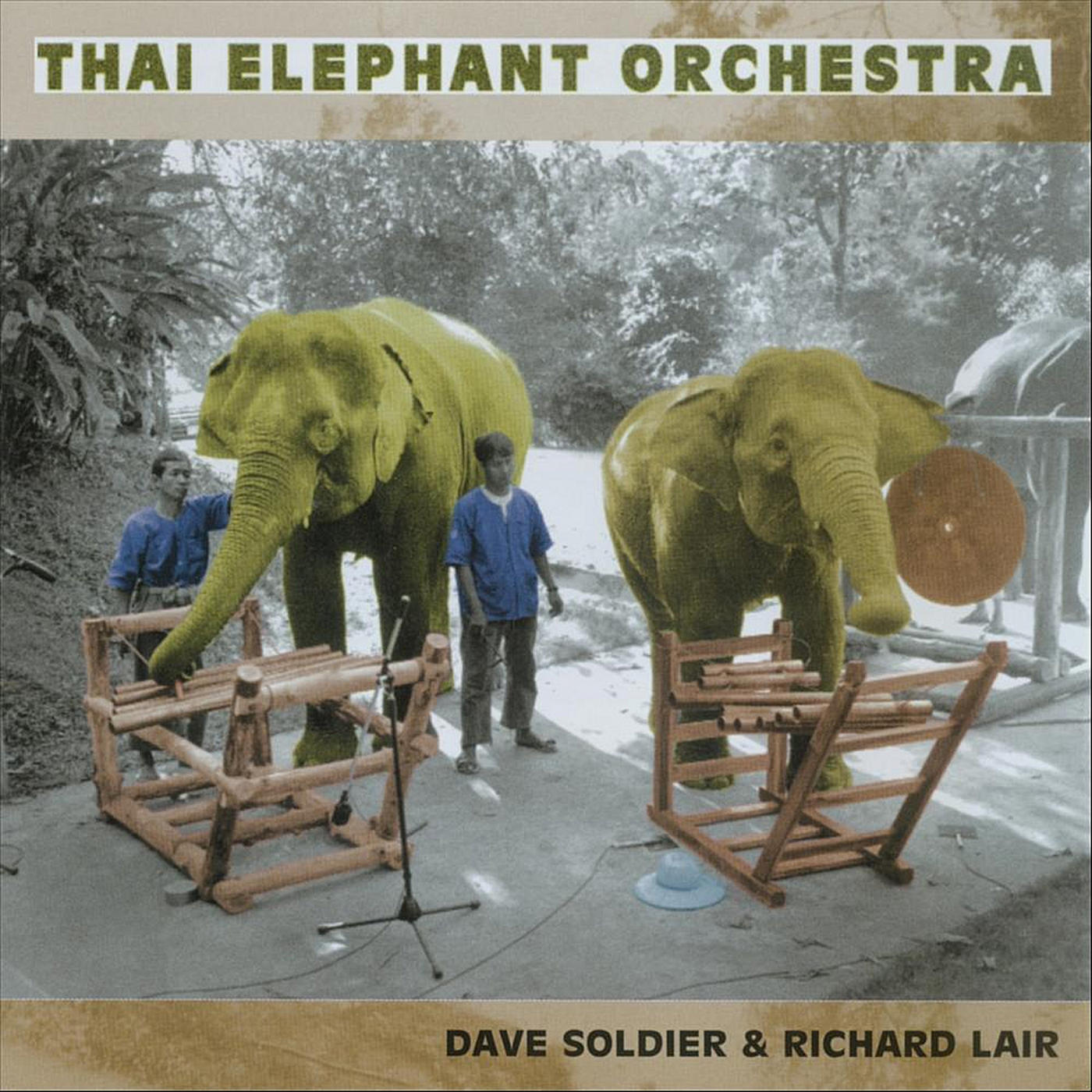
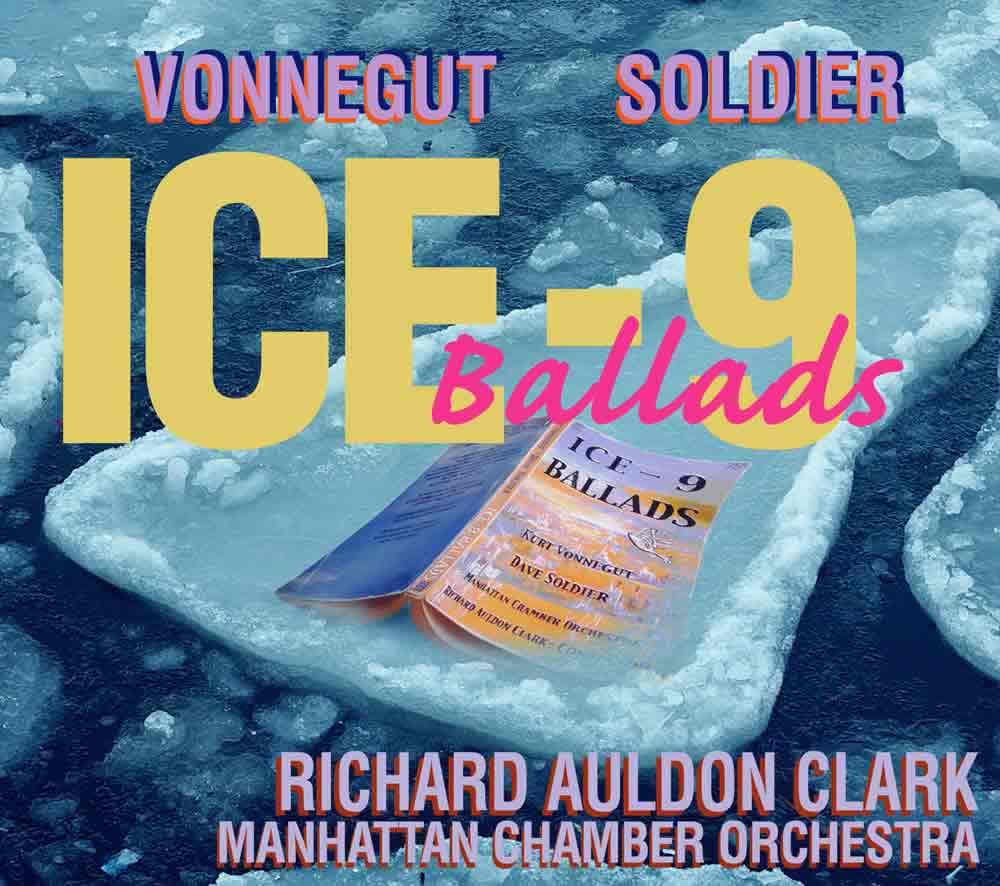









:format(jpeg):mode_rgb()/discogs-images/R-3381193-1328436987.jpeg.jpg)

